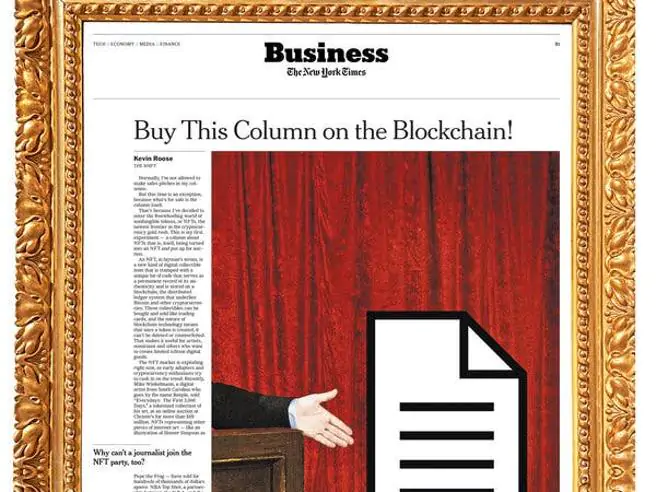Maybe you already know what NFTs, the so-called "non-fungible tokens", are, but do you know how they were born and why?
For those who don't know what an NFT is
It is a "token" which, unlike a cryptocurrency, is not fungible. It cannot be exchanged. For this reason, an NFT is practically equivalent to a certificate of ownership on a digital object (content, a photo, a video, etc.)
NFTs are big, big business for now. I have already seen everything being put up for sale: from the first tweet to the articles in the New York Times (sold for half a million euros), passing through the photos of Marco Montemagno.
Yet NFTs have not always been a big (a little?) speculative amusement park.
NFT, the origins

According to the CEO of Glitch Anil Dash, the whole NFT thing started as a project put together for a hackathon that paired artists with programmers.
The year was 2014, Dash writes, when he was paired with digital artist Kevin McCoy on that project. We were at the height of Tumblr culture. A raucous, inspiring community of millions of artists and fans shared images and videos with no attribution, compensation, or context. A solution to that problem became the seed of their idea.
“In the wee hours of the night,” writes Dash, “McCoy and I had put together an early version of a blockchain-backed means of asserting ownership over an original digital work. So we gave our creation an ironic name, not an acronym like NFT. We called it monetized graphics.”

More control of artists over their works
Neither Dash nor McCoy patented the idea, although McCoy spent the next few years evangelizing it. But both envisioned their creation as a way to give artists more control over their work.
Technology would allow artists to exercise control over their work, to sell it more easily, to protect themselves more strongly against others not authorized to appropriate it.
By designing the technology specifically for artistic use, McCoy and Dash hoped to prevent it from becoming another method of exploiting creative professionals. But with NFTs nothing went as it should. “Our dream of empowering artists hasn't come true yet, but it's produced a lot of commercially exploitable hype,” Dash says.
The implications of NFTs as we currently know them
The “proto NFTs” conceived by Dash and McCoy are fascinating because they are explicitly artist-oriented and not necessarily as interested in profits, unlike the NFT market we have now.
The current NFT boom could be like this if we wanted it to be. We could use this technology to really benefit artists and reward them for their work.

